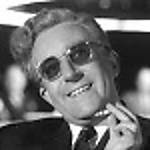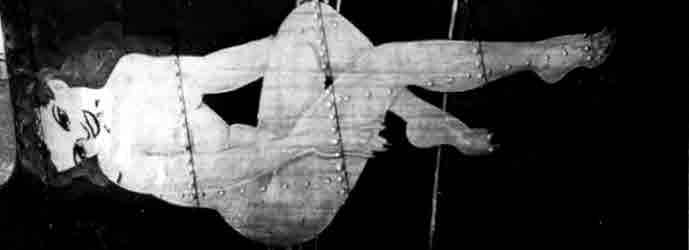Hello Friends,
I'm building my first P-47D, ever. I'm also going for a NMF with aluminum foil and or Alclad depending on my luck with the former.
My kit is the Hasegawa '47th Fighter Squadron' Razorback in 1/48 scale. The lower wing has the holes for the hard points clearly marked, but not punched through.
I tend to like my fighters clean. I won't have the drop tank attached or bombs on the hard points. My Question is: to be historically accurate, should I have the hard points attached, or can I leave them off?
Thank you for reading,
Gary
World War II
Discuss WWII and the era directly before and after the war from 1935-1949.
Discuss WWII and the era directly before and after the war from 1935-1949.
Hosted by Rowan Baylis
Jug hard points question
Posted: Saturday, June 13, 2015 - 06:37 AM UTC
Joel_W

Joined: December 04, 2010
KitMaker: 11,666 posts
AeroScale: 7,410 posts

Posted: Saturday, June 13, 2015 - 07:12 PM UTC
Gary,
Interesting question. I took a look at my resource pictures on Razorbacks, and the vast majority of war time photos show the wing bomb racks without bombs. It's hard to see just what is hung from the belly for the drop tank as it's always in deep shadows. On the other hand, restored aircraft are a mixed bag.
The best way to accurately model a particular aircraft is to try and find some pictures of it with Google searches as a starting point. After all, if there are commercially made decals for it, then there are pictures of it as well.
Joel
Interesting question. I took a look at my resource pictures on Razorbacks, and the vast majority of war time photos show the wing bomb racks without bombs. It's hard to see just what is hung from the belly for the drop tank as it's always in deep shadows. On the other hand, restored aircraft are a mixed bag.
The best way to accurately model a particular aircraft is to try and find some pictures of it with Google searches as a starting point. After all, if there are commercially made decals for it, then there are pictures of it as well.
Joel
Posted: Saturday, June 13, 2015 - 10:40 PM UTC
Gary:
The P-47C Razorbacks were not fitted with the wing hard points, which were introduced with the D model. I note this from the online Wiki article :
Refinements of the Thunderbolt continued, leading to the P-47D, which was the most produced version with 12,602 built. The "D" model actually consisted of a series of evolving production blocks, the last of which were visibly different from the first.
The first P-47Ds were actually the same as P-47Cs. Republic could not produce Thunderbolts fast enough at its Farmingdale plant on Long Island, so a new plant was built at Evansville, Indiana. The Evansville plant built a total of 110 P-47Ds, which were completely identical to P-47C-2s. Farmingdale aircraft were identified by the "-RE" suffix after the block number, while Evansville aircraft were given the "-RA" suffix.
The P-47D-1 through P-47D-6, the P-47D-10, and the P-47D-11 successively incorporated changes such as the addition of more engine cooling flaps around the back of the cowl to reduce the engine overheating problems that had been seen in the field. Engines and engine subsystems saw refinement, as did the fuel, oil and hydraulic systems. Additional armor protection was also added for the pilot.
The P-47D-15 was produced in response to requests by combat units for increased range. Underwing "wet" (equipped with fuel plumbing) bomb racks were introduced to allow a jettisonable drop tank pressurized by vented exhaust air to be carried under each wing, in addition to the belly tank.
Since your A/C is a Pacific bird, it makes sense it would have the points for drop tanks and bombs. Check what the block/lot # is and, as Joel says, always look for photos of your subject.
Good luck with it.
The P-47C Razorbacks were not fitted with the wing hard points, which were introduced with the D model. I note this from the online Wiki article :
Refinements of the Thunderbolt continued, leading to the P-47D, which was the most produced version with 12,602 built. The "D" model actually consisted of a series of evolving production blocks, the last of which were visibly different from the first.
The first P-47Ds were actually the same as P-47Cs. Republic could not produce Thunderbolts fast enough at its Farmingdale plant on Long Island, so a new plant was built at Evansville, Indiana. The Evansville plant built a total of 110 P-47Ds, which were completely identical to P-47C-2s. Farmingdale aircraft were identified by the "-RE" suffix after the block number, while Evansville aircraft were given the "-RA" suffix.
The P-47D-1 through P-47D-6, the P-47D-10, and the P-47D-11 successively incorporated changes such as the addition of more engine cooling flaps around the back of the cowl to reduce the engine overheating problems that had been seen in the field. Engines and engine subsystems saw refinement, as did the fuel, oil and hydraulic systems. Additional armor protection was also added for the pilot.
The P-47D-15 was produced in response to requests by combat units for increased range. Underwing "wet" (equipped with fuel plumbing) bomb racks were introduced to allow a jettisonable drop tank pressurized by vented exhaust air to be carried under each wing, in addition to the belly tank.
Since your A/C is a Pacific bird, it makes sense it would have the points for drop tanks and bombs. Check what the block/lot # is and, as Joel says, always look for photos of your subject.
Good luck with it.
Antoni

Joined: June 03, 2006
KitMaker: 574 posts
AeroScale: 573 posts

Posted: Sunday, June 14, 2015 - 07:07 PM UTC
B7 bomb shackles under center of fuselage became standard from block D-5, B10 underwing racks for bombs or drop tanks became standard from block D-15.
Posted: Monday, June 15, 2015 - 06:50 AM UTC
Thank you for your answers fellas. According to the serial numbers available for my kit, the plane is a P-47D-23RA. Whether the actual kit parts support that, I cannot say. I'm new to the Jug in a detailed sense. The kit has two building options. One option is for thinner or paddle bladed propellers. The other is the cooling louvres behind the engine. One set has a louvre that is gently scalloped about half way down on each side, and the other has larger, all square louvres.
Are there other small details between the blocks? Is there a site that shows the differences between the versions and blocks with pictures?
Thank you for Reading,
Gary
Are there other small details between the blocks? Is there a site that shows the differences between the versions and blocks with pictures?
Thank you for Reading,
Gary
Antoni

Joined: June 03, 2006
KitMaker: 574 posts
AeroScale: 573 posts

Posted: Monday, June 15, 2015 - 09:08 PM UTC
D-1-RE. Additional cowl flaps on lower part of the engine to improve cooling air flow through R-2800-21 engine. Extra cockpit armour and fuel and oxygen installations. Turbo-supercharger exhaust system given adjustable ducts and redesigned vents.
D-2. Turbo-supercharger shroud removed.
D-3-RA. Further modifications to fuel and oxygen installations.
D-4-RA. Provision for water injection.
D-5-RE. Provision for water injection by engine driven pump. New C-21 type turbo-supercharger. Two point B-7 centreline shackles able to carry single 500lb bomb or drop tank.
D-6-RE. Minor modifications to electrical system.
D-10-RE. New R-2800-63 engine with built-in water injection and GE C-23 turbo-supercharger. Modifications to hydraulics and flaps. Manual cable-charging of guns introduced.
D-11. Introduced electrically driven water pump operated automatically by the throttle lever. New type of gun camera allowed the pilot to operate the camera without firing the guns.
D-15. Forward fuel tank enlarged. Wing strengthened and plumbed for fuel flow. B-10 underwing racks added that could carry a drop tank or 1,000 bomb. Jettisonable canopy.
D-16. Modifications to use 150 grade fuel.
D-20-RE. R-2800-59 engine, identical to R-2800-63 except for new ignition system. When not carrying maximum load of bombs and fuel could carry extra ammunition. Guns air heated instead of electrically heated. Tail gear strut lengthened and natural metal finish adopted.
D-21. Revised water injection system.
D-22-RE. Hamilton Standard Hydromatic 24E50-65 paddle-blade propeller.
D-23-RA. Curtiss Electric C542S-A114 propeller.
D-25. Bubble canopy. Hamilton Standard prpeller.
D-27. Curtiss Electric propeller.
D-30. Extended dorsal fin added. Larger landing flaps. Underwing dive brakes.
D-40. Underwing racks for 10 rockets as standard.
D-2. Turbo-supercharger shroud removed.
D-3-RA. Further modifications to fuel and oxygen installations.
D-4-RA. Provision for water injection.
D-5-RE. Provision for water injection by engine driven pump. New C-21 type turbo-supercharger. Two point B-7 centreline shackles able to carry single 500lb bomb or drop tank.
D-6-RE. Minor modifications to electrical system.
D-10-RE. New R-2800-63 engine with built-in water injection and GE C-23 turbo-supercharger. Modifications to hydraulics and flaps. Manual cable-charging of guns introduced.
D-11. Introduced electrically driven water pump operated automatically by the throttle lever. New type of gun camera allowed the pilot to operate the camera without firing the guns.
D-15. Forward fuel tank enlarged. Wing strengthened and plumbed for fuel flow. B-10 underwing racks added that could carry a drop tank or 1,000 bomb. Jettisonable canopy.
D-16. Modifications to use 150 grade fuel.
D-20-RE. R-2800-59 engine, identical to R-2800-63 except for new ignition system. When not carrying maximum load of bombs and fuel could carry extra ammunition. Guns air heated instead of electrically heated. Tail gear strut lengthened and natural metal finish adopted.
D-21. Revised water injection system.
D-22-RE. Hamilton Standard Hydromatic 24E50-65 paddle-blade propeller.
D-23-RA. Curtiss Electric C542S-A114 propeller.
D-25. Bubble canopy. Hamilton Standard prpeller.
D-27. Curtiss Electric propeller.
D-30. Extended dorsal fin added. Larger landing flaps. Underwing dive brakes.
D-40. Underwing racks for 10 rockets as standard.
 |















